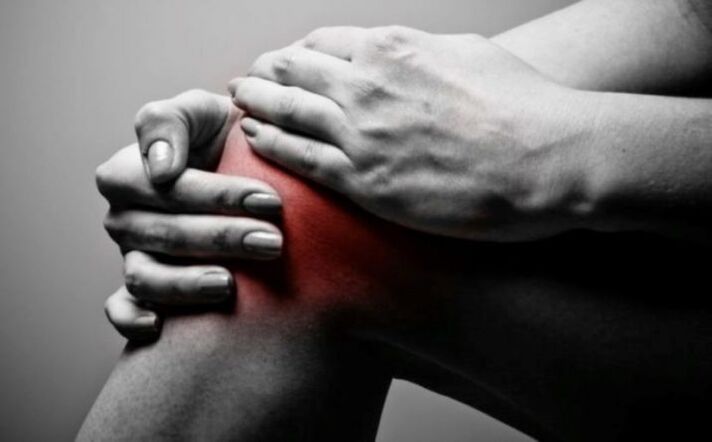
There are many pathologies of the joints, they vary depending on the origin, the development mechanism, symptoms and treatment methods.Most often, among other things, arthritis and osteoarthritis are diagnosed.Diseases are similar, but have significant differences.A differential diagnosis is necessary for the proper selection of therapy and the timely prevention of serious complications.In order to avoid misunderstandings and confusion, you must understand how osteoarthritis differs and what are the two ills.
What is arthritis and osteoarthritis, how they differ
Arthritis, osteoarthritis - Two different diseases that affect the joints.Despite the consonance of the terms, it is not the same diagnosis, and even more synonyms.They have both general and diverse signs, so they should not be confused.
Arthritis is a dystrophic degenerative joint pathology, which is characteristic of:
- Too bad the cartilage fabric with the progressive involvement of ligaments, muscles, synovial shell, bones in the destructive process;
- non -inflammatory character;
- chronic form of the course;
- It develops locally, without affecting the body as a whole.
Osteoarthritis occurs mainly in adulthood, after 45 years, in women in the bottom of the aging of the body, the wear of the musculoskeletal system.Occasionally appears in more young people due to significant physical effort, strong injuries, unfavorable working conditions.According to the international classifier, MKB-10, a code of M15-M19 is awarded.
Arthritis is a collective term which includes all joint diseases:
- is inflammatory;
- It takes place more often in an acute form, turning into a chronicle;
- affects bone tissue and joint cavity;
- It occurs as a systemic lesion, with the involvement of several joint compounds and target organs both in the pathological process.
Adults under 40, as well as children, are subject to arthritis.The disease is reversible and successfully treated subject to a timely medical aid.According to the classifier, ICD-10 has a code M00-14.
Arthritic and arthrotic pathologies are often interconnected.The incomplete arthritis with age leads to dystrophic changes in cartilage.In turn, osteoarthritis during exacerbation periods is accompanied by tissue inflammation.Joint disease is called arthroso-arthritis.
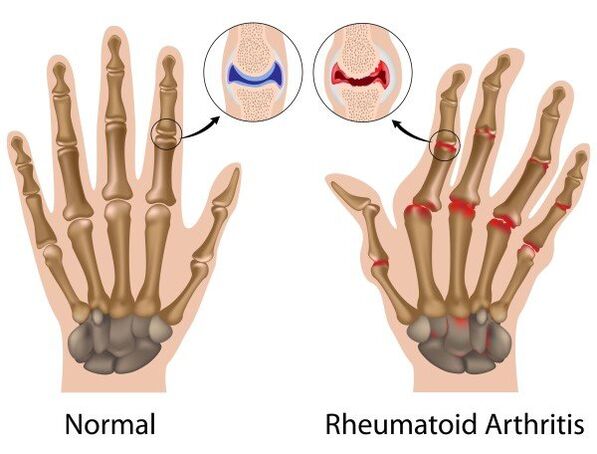
Types of disease
Arthritis in the official medical classification is divided into cash according to several criteria.According to the form, acute inflammation (severe inflammation, sneezing to complete healing) and chronic (incurable pathology with exacerbations).Depending on the degree of damage to the joints, there is monoarthrosis (in a joint), oligoarthrosis (in 2-3 joints), polyarthritis (multiple inflammation).
The most popular arthritis classifier is taken into account according to the origin:
- Rheumatoid - The deep cause lies in genetic disorders of autoimmune nature;
- Infectious (septic) - The development of pathogenic microflora directly in the joint cavity;
- Reactive - Secondary complication of respiratory infections, genitarin and intestinal;
- Traumatic (post -traumatic) - is formed due to mechanical damage to bones, tendons, muscles, ligaments;
- Exchange (drop) - violation of metabolic processes in the body;
- Rheumatism - develops after a bacterial infection in the body.
Osteoarthritis is characterized by an exclusively chronic form with damage to a joint compound.It mainly affects mobile joints in the human body - legs (knee, ankle, foot), hands (shoulder, elbow), as well as jaw and vertebral areas.
Depending on the location, it is divided into:
- knee (gonarthrosis);
- hip (coksartrose);
- ankle;
- Brachial;
- elbow;
- hands;
- thumb in the leg;
- vertebral column (spondylrosis);
- Cervical (Unkwertbral);
- Landing-zero (VMS).
Therapy largely depends on the type of joint pathology, in particular arthritis.
The difference in the causes of arthritis and osteoarthritis
Arthritis and osteoarthritis occur in the context of many unwanted factors.The common provocateurs of the two diseases are:
- genetic predisposition;
- injuries (bruises, dislocations, subluxation, stretching, fractures);
- Congenital anomalies in the development of the musculoskeletal system;
- metabolic and hormonal disorders;
- Severous chronic diseases (rheumatism, tuberculosis, diabetes mellitus, thyroid problems);
- Incorrect lifestyle (low activity, bad nutrition, overweight, bad habits);
- Important physical and emotional charges.
The deviations listed negatively affect the body as a whole, which considerably increases the risk of joint disease.But there are separately the more direct and obvious causes of each disease.
Of great importance in the development of the arthritis game:
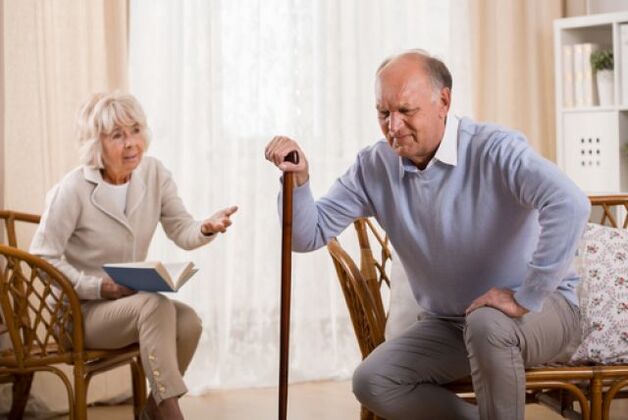
- Infections of viral, fungal, bacterial origin (flu, salmonellosis, hepatitis, amygdalite, intestinal infection, borrell, syphilis);
- autoimmune pathologies (psoriasis, multiple sclerosis, red lupus);
- Metabolic violation (drop);
- Bone diseases (osteoporosis, osteomyelitis, osteochondrosis, osteoarthrosis);
- allergic reactions;
- low immunity;
- Surgical operations on joints.
The impulse for the occurrence of a pathology can be banal hypothermia, poor sanitary conditions, an unbalanced diet.
What is the difference between osteoarthritis and arthritis?The degenerative changes in cartilage for osteoarthritis, in addition to the common causes listed, occur for reasons:
- Disorders linked to the age of the functionality of the musculoskeletal system;
- unused inflammatory process in the joints (arthritis, synovitis);
- Poor blood circulation (atherosclerosis, varicos);
- Professional activities (athletes).
As a rule, joint pathology is the result of several internal unwanted and external factors at the same time.
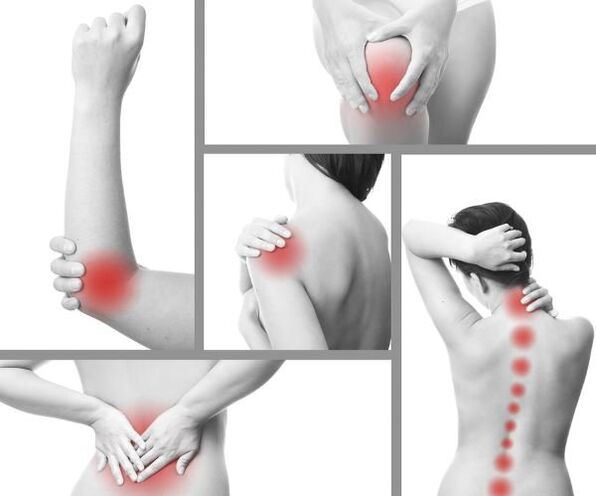
The difference between arthritis and osteoarthritis in symptoms
Symptoms of two diseases in general manifestations are quite similar.Inflammatory and non -inflammatory damage to the joints are characterized by:
- pain of various intensities;
- a feeling of stiffness and stiffness;
- Crunch and creaking while walking;
- discomfort after prolonged rest;
- Painful reaction to weather changes, physical activity;
- External deformation of the affected area.
At the same time, the nature and time of the occurrence of unpleasant sensations, the gravity and intensity of the pathological process differ considerably.
By these signs, you can understand what the disease is in front of you - arthritis, osteoarthritis, what is the difference between them:
- The pain for arthritis suddenly occurs in the context of relative health, with osteoarthritis, it gradually increases as the dystrophic changes in cartilage are progressed - from a few months to several years;
- Arthritis disturbs painfully in the evening and morning, decreases after the development of the joint, the pain in osteoarthritis, on the contrary, lights up at rest and is considerably increased during the trip (at the last stage, it is constantly present);
- Arthritis is always accompanied by an inflammatory process with swelling, redness, hyperemia, local increase in temperature, for osteoarthritis, such a course is only characteristic during periods of exacerbations;
- Arthritis is systematic, involving the left and right joints of the legs or arms in the process at the same time, as well as to affect the heart, light, skin, vessels, the nervous system.The osteoarthritis lesion does not generally go beyond a pathological joint;
- In the first stages, the appearance is distinguished - with arthritis, the inflammation of the tissues is clearly visible, the place is swollen and becomes warm, with osteoarthritis that there are no visual changes, and it is only in the advanced cases of the two diseases that joint deformation is manifested;
- General well -being with arthritis gets worse - the temperature increases, there is weakness, discomfort, appetite disappears, the weight is reduced (in a chronic form, this sign can be absent).Such symptoms do not disturb patients with osteoarthritis, only a painful and ill -stake that works is under the spotlight.
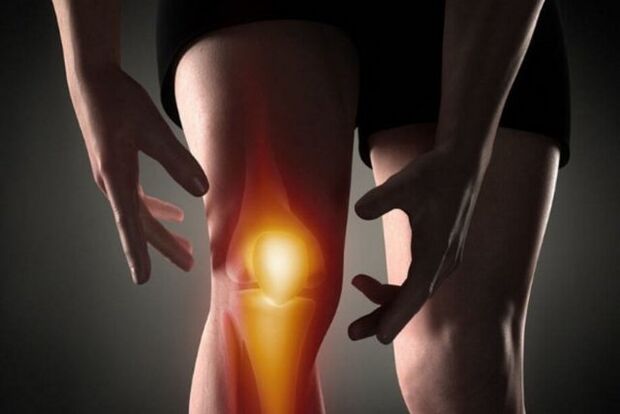
At different stages of the disease, the clinical picture may vary considerably.It is possible to make a precise diagnosis only after a complete examination.
Differential diagnosis of osteoarthritis and arthritis
During the first signs of joint disease, it is necessary to register for a consultation with a doctor.An arthrologist is engaged in such pathologies, which exactly knows how to recognize arthritis and osteoarthritis and what is its difference.If there is not such a clinic specialist, you can visit an orthopedist, a traumatologist, an osteopath, a rheumatologist, a surgeon.With arthritis, according to the etiology of the disease, an additional consultation of a specialist in infectious diseases, immunologist, neuropathologist, endocrinologist, cardiologist may be necessary.
Based on the confrontation and initial diagnosis, it is difficult to make an accurate diagnosis.
A certain number of instrumental research is necessary:
- X -ray to determine the condition of the joints, recognition of injuries, neoplasms;
- CT and MRI for detailed consideration not only joint cavities, but also soft tissues;
- Ultrasound-is carried out in the event of contraindications to X-Ray and Tomography.
All these methods are quite informative, applicable to the two pathologies.

If arthritis is suspected, you cannot do without laboratory tests which allow you to identify the deep cause of the disease and determine the general condition of the body:
- blood tests for the level of leukocytes, ESR, specific markers;
- Urine analysis for uric acid salts;
- rheumatic tests to detect a rheumatoid factor;
- immunological test to assess the immune defense of the body;
- PCR diagnostics on the pathogen of infection;
- Arthroscopy for the fence of synovial fluid for analysis.
A set of methods is individually selected on the basis of a clinical picture and a preliminary inspection of a specialist.A complete examination does not take much time, but it is very important to establish a differential diagnosis and prescribe an appropriate treatment.
The difference and the characteristics of the treatment of each disease
The two conditions involve special therapy, without which arthritis passes in a chronic form, and deprived of performance osteoarthritis.
The general principles of treatment are similar, but the tasks are different:
- With arthritis, the main objective is to relieve inflammation, to eliminate painful symptoms, to prevent complications for other organs;
- With osteoarthritis, due to the inability to fully cure the disease, the main therapeutic accent is pain relief and stopping dystrophic processes in cartilage.
The medical measurement complex necessarily includes drugs in the form of tablets, ointments, creams, solutions, powders, injections.As auxiliary methods, folk recipes, physiotherapy and therapeutic exercises are used.In advanced cases, you cannot do without surgery.
Therapy is carefully selected according to individual indications.There is no universal medicine for arthritis and osteoarthritis, self-medication is prohibited.
Arthritis and osteoarthritis - What is the difference in drug treatment
Pharmacy medicines are an integral part of the treatment of the two ailments.You cannot do without arthritis due to the presence of a strong inflammatory process.In therapy, they are used:
- Non-steroid anti-inflammatory drugs in the form of tablets, powders, ointments.The drugs in this group stop inflammation and unpleasant concomitant symptoms.
- Immunosuppressants.Remove their own immunity with autoimmune origin.
- Corticosteroid hormones.Select intense pain with a tablet form or intra-articular injections.
- Antibiotics.They have an antibacterial effect in the presence of an infectious process in the body and the joint.
NSAIDs and corticosteroids are effective during the exacerbation period of osteoarthritis, when inflammation and intense pain are attached to the pathological process.In addition, the disease implies the use of:
- Chondroprotectors to restore the cartilage fabric and stop the destruction of the joint.In the long term, powders are used to orally receive intramuscular and intra-articular injections.
- Oral pain relievers.
- Drug vasodilators to improve blood circulation.
- Musorelaxing of hypertonicity and spasms of the muscles.
- Vitamin complexes to improve metabolic processes and prevent systemic complications.
Chondroprotective and vitaminal agents are also indicated in certain forms of arthritis, in particular in chronic form.
Correct therapy is selected according to the results of the examination, taking into account the age and well-being of the patient.
Appointment of arthritis and osteoarthritis
Symptomatic treatment is also necessary for arthritis and arthritis of the joints.Various creams, ointments, gels work locally, eliminating inflammation, pain, swelling, discomfort.In addition, they have no systemic effect on the body.
Can reduce the condition:
- anti-inflammatory nails based on a special substance;
- other non-steroidal anti-inflammatory drugs;
- pain relievers and warming;
- Local drugs that improve blood flow and elasticity of the muscle-ligament apparatus based on snake and bee venom;
- Shark fat ointments, activating metabolic and regenerative processes in the joints;
- Rub with analgesic and anti-inflammatory properties.
Local funds rarely cause side effects, but do not forget the possibility of an allergic skin reaction.

Traditional medicine
Popular methods are a good assistant in the treatment of arthritis and osteoarthritis.Home recipes based on natural components have a mainly symptomatic effect, used as an additional tool.
With arthritic joint inflammation, you can do:
- Compresses the night from burdict leaves, white cabbage, aloe, washed in advance and slightly bumpy to secrete the juice;
- Hot baths of pine needles, smoking joints in a healing decoction;
- grinding a place affected from egg yolk, spoon of apple and turpentine apple cider vinegar;
- A decoction based on sage, thousand-feet and braid plants, 2 tablespoons of the collection in a half-election of boiling water, taking 0.5 cup before meals.
To alleviate the condition with osteoarthritis, will help you:
- a compress of the root of ginger, grated on a grater and attached to a painful joint to stimulate blood circulation and a warming effect;
- Rubika for the night of 50 g of honey and 1 tsp.Healing mother;
- Patch with pepper or mustard compress as thermal procedure;
- Baths based on a decoction of mint leaves or soda-salt solution.
All recipes can be used for both diseases, but only after consulting the attending physician.Home treatment can help, eliminating unpleasant sensations and damage, causing an allergic reaction and exacerbation.
Exercises for arthritis and osteoarthritis
The purpose of therapeutic gymnastics is the restoration of joint mobility and the prevention of deformation changes.
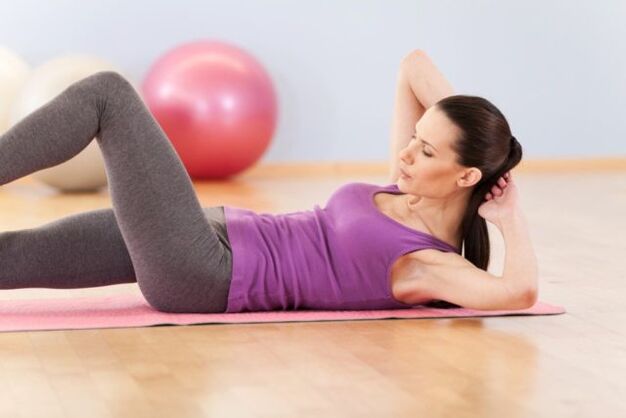
In the same way, this task is important for all joint pathologies:
- For the hip zone - the squats at right angles, the legs swinging forward and backwards, exercises "bike" and "scissors" in the installation position;
- For the knees - sit on the heels of the position on the knees and go up, the "bike" exercise - standing circular movements standing from the knees with closed legs, move slowly with an "goose approach";
- For the ankle - to massage everyone separately a finger, turn your foot in the hour and against, stretch the sock of yourself and towards yourself;
- For brushes and fingers - Make circular movements with a brush in different directions, tighten and end the fist, turn a round object in your hands;
- For the shoulder belt - to turn back and forward, lifts the arms and shoulders alternately.
All exercises can only be performed during the remission of the disease by resolving a doctor.
Auxiliary therapeutic techniques
Joint treatment is not only limited to medical and folk methods.It is important to carry out complete therapy, in particular at the rehabilitation stage after an acute period and the restoration of joint mobility.
Experts recommend:
- massage to reduce pain and develop the affected joint (point, honey, manual technique);
- Physiotherapeutic procedures in order to improve cell metabolism, accelerate tissue regeneration, prevention of complications (magnetotherapy, ultrasound, electrophoresis, paraffinopia);
- Alternative medicine (Hirudotherapy, Acupuncture, Kines Nicesap);
- Appropriate nutrition (diet) with a predominance of fruits and vegetables, rejection of harmful foods and alcohol;
- Treatment of sanatorium-protest with a complete complex of therapeutic services.
In advanced cases, and this often happens with osteoarthritis, you should use radical surgical methods.Sinectomy, arthroplasty, endoprothetics, arthrodesis will help the joints to return the joints.Before this condition, the course of the disease is preferable not to authorize, performing all medical prescriptions.
Conclusion
We offer short forms of information on osteoarthritis and arthritis diseases, what is the difference in all important criteria:
| Criteria | Arthritis | Osteoarthritis |
| Etiology | Inflammatory disease, mainly an acute form | Degenerative-dystrophic, exclusively chronic course |
| Reasons | Infections, autoimmune and metabolic disorders | Age-related changes in the musculoskeletal system, underestimated from arthritis |
| Wounds, hormonal failures, large corners, sedentary and unhealthy lifestyle, chronic pathologies | ||
| Symptoms | Sudden appearance, pronounced, there is common discomfort | Progressive growth, symptoms are local |
| Pain, crunch, stiffness, stiffness during walking, external deformation (in the last stage) | ||
| Diagnosis | Blood and urine laboratory tests | - |
| X -Ray, ct, MRI | ||
| Treatment | NSAIDs, Corticosteroids, Immunosuppressants, Antibiotics | Chondroprotective, pain relievers, muscle relaxing, hormones, vitamins |
| Forecast | In most cases, a complete recovery, rarely - the transition to a chronic form | The gradual destruction of the joints, followed by a loss of mobility, the disability, the need for surgery |





































